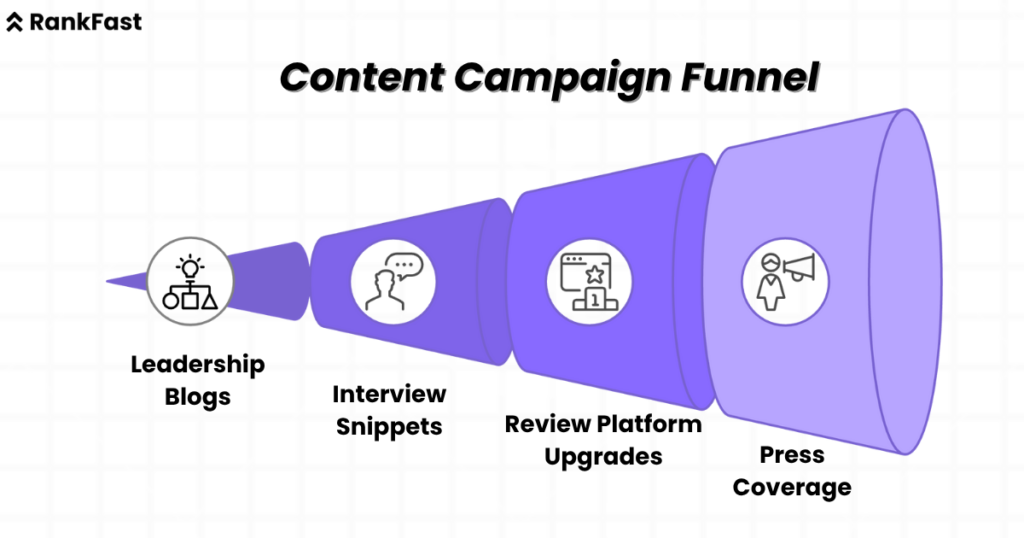Why does one negative article stay on the first page of a search while your press release disappears? Many brands ignore this risk until the damage is done. Others try to fix it with more ads, not smarter content. But short-term tactics don’t fix long-term perception. Online reputation now equals real-world trust. In this blog, you’ll learn how to protect your brand and grow your presence using proven SEO reputation management strategies.
Why SEO Reputation Management is Critical
We no longer live in a world where only customers visit your website. Everyone, from investors and employees to vendors and journalists, Googles your brand. What they see on the first page shapes their decisions.
That’s why reputation management SEO is more important than most people think. A few bad articles, one viral tweet, or a dated review can stick to your name for years. Fixing that is slow and technical, but ignoring it costs more.
Also, search results don’t forget. A crisis may fade from memory, but it stays in Google’s index. That’s why long-term SEO reputation management services help maintain control over your digital shelf space.
According to industry data, a well-run thought-leadership SEO campaign can return up to 748% ROI. That includes direct traffic, leads, and improved brand equity.
Best Practices for SEO Reputation Management
Before you apply any tactics, make sure you understand your current search landscape. Check your first 2 pages of branded results. Analyze what’s ranking and why. Only then can you build a strategy that works for both clean-up and growth.
1. Monitor Your Online Reputation Regularly
You can’t fix what you don’t track. Set up Google Alerts for your brand name, top products, leadership names, and key competitors. Use tools like BrandMentions or Semrush for deeper analysis. Track not just new mentions but their search positions. Negative stories on page 3 today could move up tomorrow.
Real-time monitoring allows quick action. For example, a poor Glassdoor review that starts ranking needs fast content intervention. The delay gives it strength.
Use internal teams or hire agencies for ongoing SEO reputation management reports. Set benchmarks for branded keywords, news presence, and sentiment score. Watch trends, not just spikes.
2. Optimize Positive Content
Don’t just publish content. Optimize it. Every positive article should follow on-page SEO basics, title tags, meta descriptions, internal links, and schema.
Create category-wise content clusters. For instance:
- Brand story
- Team bios
- Milestones
- Customer testimonials
- Case studies
Each page should target branded keywords with variations. Think: “XYZ Company success story,” “XYZ reviews 2025,” etc.
Use FAQ schema to help Google pull trusted answers directly. The more your voice ranks, the less room there is for others to distort it.
3. Address Negative Content
Don’t ignore harmful content. Don’t attack it, either. Instead, push it down with stronger assets. Create newer content that directly targets the same keywords.
Use neutral terms like “XYZ customer feedback” instead of fighting “XYZ scam” head-on. Also, request corrections if misinformation exists. Many publishers respond to polite, factual emails backed by documents.

- Start a content campaign with:
- Thought leadership blogs
- Interview snippets
- Review platform upgrades
- Press coverage
All of this helps dilute and outrank negative content over time.
4. Build a Strong Backlink Profile
Strong pages need strong links. Identify which of your branded pages have no external links. Start building contextual backlinks using branded anchor text like “XYZ brand insights” or “XYZ growth report.”
Use digital PR, guest posts, and niche directories. Avoid paid links or spammy sources. A solid backlink strategy improves trust signals. This directly impacts SEO and reputation management strength.
Also, link internally from your homepage, footer, and About page. This tells Google that these are important pages to prioritize.
5. Engage in Thought Leadership and Content Marketing
This is long-term SEO fuel. Publish in-depth articles on your industry’s future, data insights, leadership views, and expert commentary.
Add author bios with LinkedIn links and recognitions. Get your founders or CXOs interviewed in trusted publications. This builds both authority and trust.
It also helps your reputation management SEO strategies by ranking expert-led content that pushes weaker or hostile links down.
Don’t just write. Promote it across email, social, and press channels.
6. Implement a Crisis Management Plan
When a crisis hits, time is everything. Prepare content templates and response workflows. Build a “first 72 hours” guide for online reputation.
Assign clear roles: PR, legal, content, and SEO. Make sure you own all top-branded properties so no one else fills the gap during silence.
During a crisis, update your blog, press page, and social handles with official facts. Then, build a wave of fresh SEO content to counter the narrative.
Every minute you delay helps bad content stick.
7. Create and Optimize a Press Page on Your Website
Your press page must rank on page 1. Keep it updated with releases, awards, events, media quotes, leadership commentary, and official logos.
Use schema markup. Add author bios. Include journalist contacts. This central hub builds authority and supports SEO reputation management tips by becoming a trusted source.
Also, interlink it from your home page and newsroom. Google ranks pages higher when they’re easy to find.
8. Use Structured Data for Branded Content
Structured data helps search engines understand your pages better. Use:
- Organization schema
- Article schema
- Person schema (for leadership)
- FAQ schema
- Review schema
This helps Google feature your content in snippets and answer boxes. The more visibility you gain here, the more you push down unreliable content.
Structured data also gives you an edge in voice and AI search results, critical for future SEO and reputation management.
9. Acquire and Manage Branded Domains
Buy all domain versions of your brand:
- .com, .in, .co
- xyzreviews.com
- xyzpress.com
- xyzcareers.com
Redirect unused ones to your main site. Use others to build microsites for SEO and PR. This stops misuse and gives you more surface area in search results.
It also helps when people search branded queries with review or support terms.
10. Implement Reputation-Focused Link Building
Link building should support branded pages. Focus on guest posts with anchor texts like “XYZ customer success,” “XYZ company update,” or “XYZ leadership.”
Avoid exact-match links that look forced. Spread your anchors naturally over time.
Use interview placements and industry roundups to drive high-authority links back to branded content. This lifts your core reputation assets.
11. Target “Brand + Review” and “Brand + Scam” Keywords
Yes, it sounds uncomfortable. But people search for this. Ignoring it won’t stop it.
Create neutral, helpful content that addresses these phrases without sounding defensive. For example:
- “XYZ brand review: Pros, cons, verdict”
- “Is XYZ a scam? Facts vs rumors”
These pages help control the narrative, rank above harmful content, and show transparency.
Always include real examples, customer stories, and third-party proof.
12. Regularly Publish Positive Company News and Updates
Don’t wait for good news to go viral. Make it public, consistently.
Use your blog and press page to share:
- New partnerships
- Hiring updates
- Social impact work
- Product milestones
These build a base of fresh content that supports SEO for reputation management. More content = more control = better protection.
Consistency here is better than one-time PR blasts.
Tools & Resources for SEO Reputation Management
Choosing the right tools helps automate tracking, audit results, and plan SEO better. Below are the top tools used by experts to manage SEO and reputation management efficiently.
| Tool Name | Function | Best Use Case | Cost Level | Recommendation |
| BrandMentions | Real-time brand alerts | Track mentions and sentiment | Mid | Daily monitoring |
| Semrush | SEO audit and keyword tracking | Competitor reputation tracking | High | Weekly analysis |
| Google Alerts | Free brand tracking | Instant name alerts | Free | Entry-level |
| Ahrefs | Backlink and content analysis | Identify negative link sources | High | Advanced analysis |
| Mention | Social and web mention tracking | Crisis alerts | Mid | PR use cases |
Final Thoughts
Your brand’s reputation is shaped by what people find when they search. That’s where SEO reputation management matters most. With smart planning and the right actions, you can stay ahead of bad press, highlight your wins, and build trust across channels.
At Rankfast, we design strong SEO reputation management services that protect your brand at every step. Ready to own your brand online?
FAQs
1. What is SEO reputation management?
It is the process of controlling what users see in search results when they search for your brand or leadership.
2. Can SEO fix negative reviews?
Not directly. But it can help push positive pages higher and reduce the visibility of harmful reviews.
3. How long does it take to see results?
Results may take 3 to 6 months, depending on content strength and search competition.
4. Are paid ads part of reputation SEO?
No. SEO is organic. Ads support visibility but don’t fix long-term search issues.
5. Should startups care about SEO for reputation management?
Yes. Early reputation mistakes stick longer. Start clean with proactive SEO now.

Leave a Reply